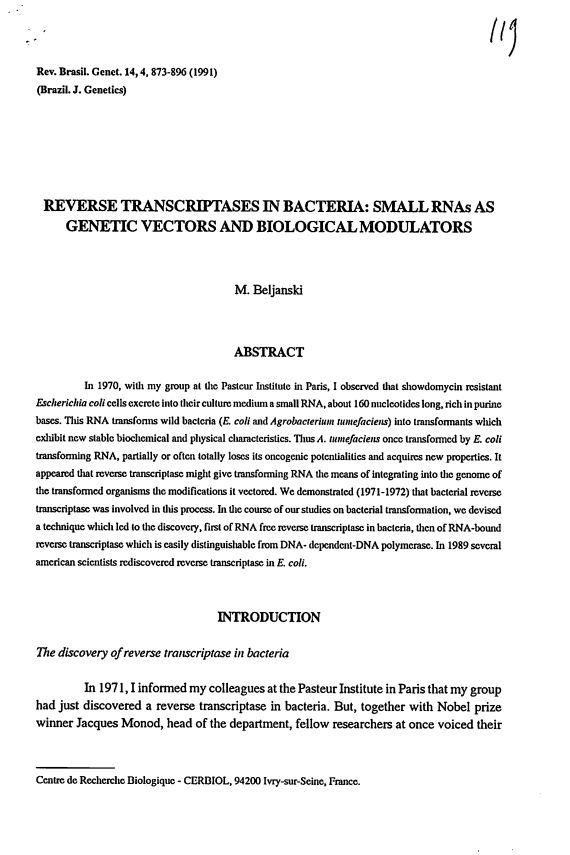119 – Reverse Transcriptases in Bacteria: Small RNAs as Genetic Vectors and Biological Modulators
1991
Authors : M. BELJANSKI
Brazil. J. Genetics, 14, 4, 1991, pp. 873-896.
Available in English only
ABSTRACT: In 1970, with my group at the Pasteur Institute in Paris, I observed that showdomycin resistant Escherichia coli cells excrete into their culture medium a small RNA, about 160 nucleotides long, rich in purine bases. This RNA transforms wild bacteria (E. coli and Agrobacterium tumefaciens) into transformants which exhibit new stable biochemical and physical characteristics. Thus A tumefaciens once transformed by E. coli transforming RNA, partially or often totally loses its oncogenic potentialities and acquires new properties. It appeared that reverse transcriptase might give transforming RNA the means of integrating into the genome of the transformed organisms the modifications it vectored. We demonstrated (1971-1972) that bacterial reverse transcriptase was involved in this process. In the course of our studies on bacterial transformation, we devised a technique which led to the discovery, first of RNA free reverse transcriptase in bacteria, then of RNA-bound reverse transcriptase which is easily distinguishable from DNA-dependent-DNA-polymerase. In 1989 several american scientists rediscovered reverse transcriptase in E. coli.Voir le document




